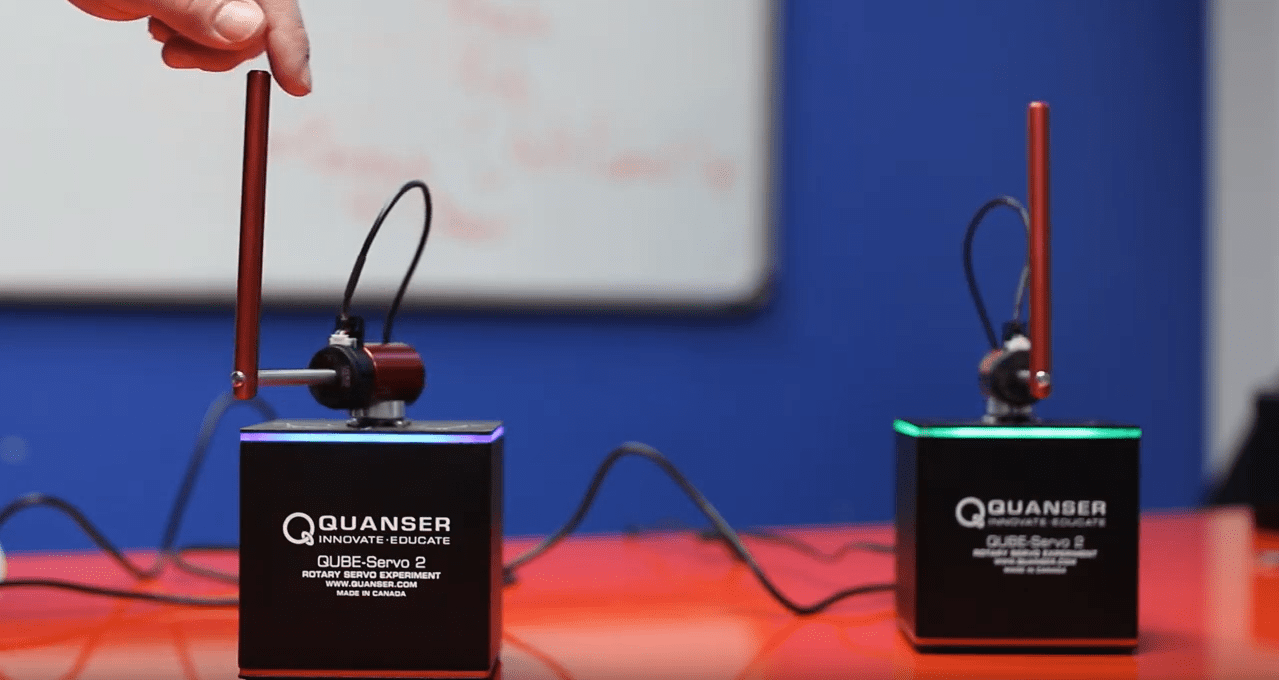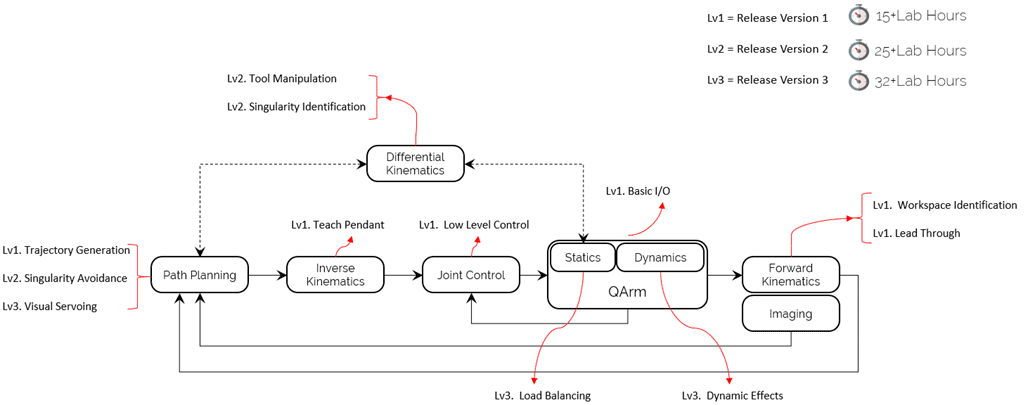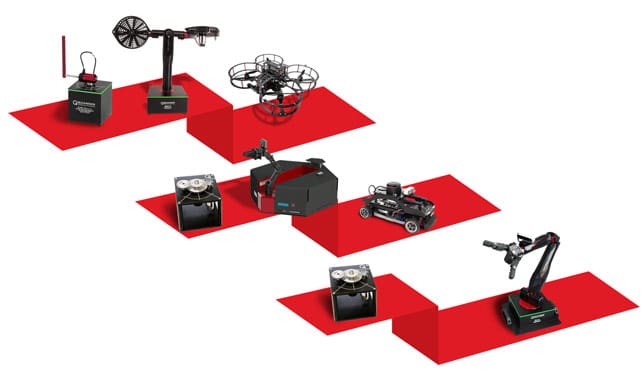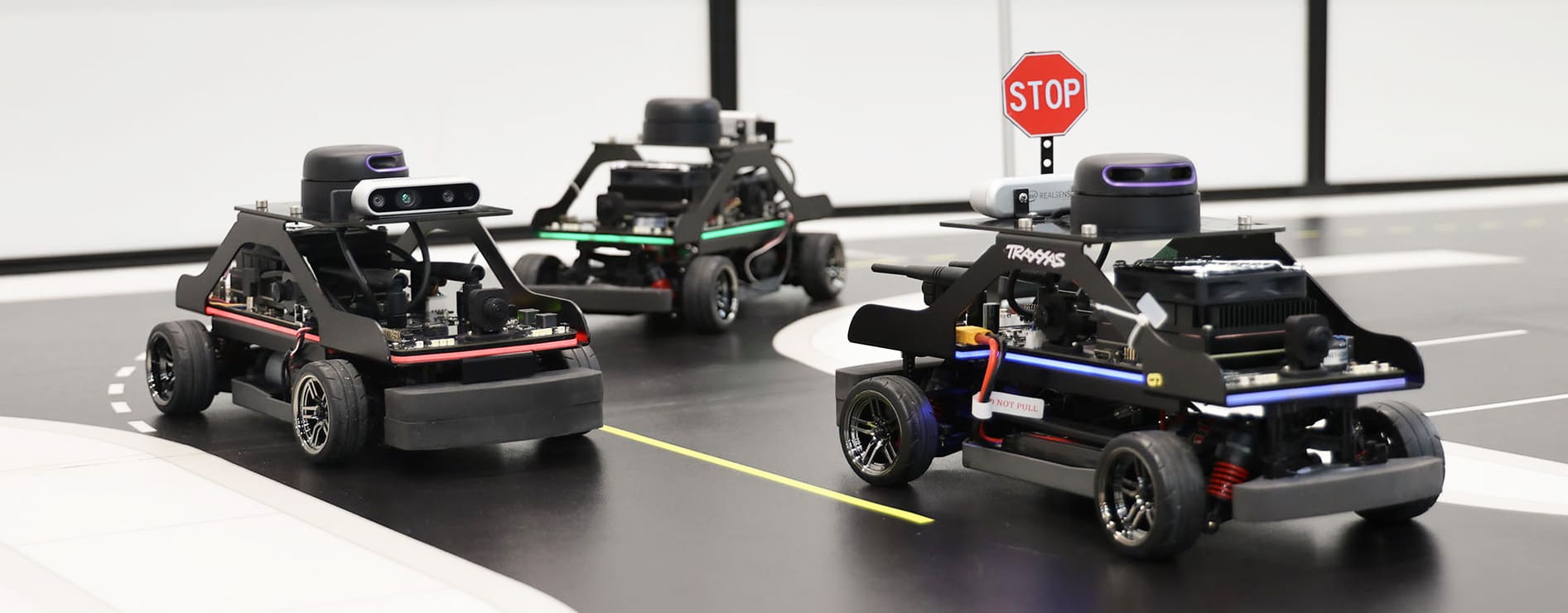
THE POWER OF 1/10
Self-driving researchers and educators around the world have found that 1/10th scale vehicles are ideal for accelerating their work. Safer, smaller, and less costly than full-size vehicles, 1/10th size platforms allow people of all experience levels to get started immediately and scale-up quickly.
But what if you didn’t have to scale down your processing power? What if your 1/10th scale platform had the processing power of a full-size road vehicle?
FULL SCALE POWER
Until now, the computational hardware found in full-size vehicles, such as a Tesla or Waymo, was far too large and heavy to fit on a 1/10th scale platform. The graph below shows the processing power of 5 different platforms: The two bars on the left represent large hardware only found on full-size vehicles, and the three bars on the right represent hardware sized for 1/10th scale vehicles.

TOPS, or Trillions of Operations Per Second, is a simplifying metric used to compare the computational power of different chips.
As you can see, 1/10th scale vehicles have been limited to around 1/10th the processing power found on a full-size car, and until recently this has been the limitation for all 1/10th scale platforms.
But now with QCar 2, powered by Nvidia AGX Orin™, users can now harness the computational power of a full-size vehicle at the 1/10th scale, as seen below.
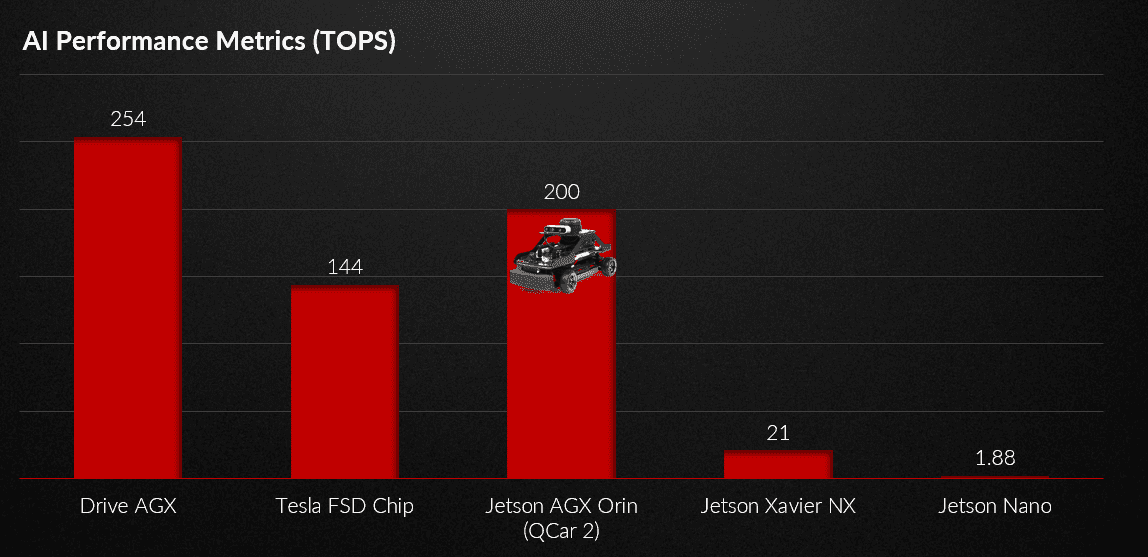
After 2 years of development, Quanser is proud to announce that the Nvidia AGX Orin™ has been fully integrated into the QCar 2 design. The world’s first and only AGX Orin™ specifically customized and optimized for self-driving research and education. Now capable of processing multiple high-framerate camera feeds simultaneously, and deploying the latest AI-based vision processing systems, the QCar 2 is the most powerful and fully featured 1/10th scale self-driving platform available today.
360 DEGREE PROCESSING
For today’s self-driving vehicles, operating on modern roads requires full 360° vision. The QCar 2, like the QCar 1, provides users with full 360° vision using 4 mounted cameras and overlapping fields of view. But simultaneously capturing, compressing, and transmitting 4 camera feeds can be very resource-intensive, especially if you post-process the data. As you can see from the video below, upgrading to the Nvidia AGX Orin™ significantly increases our bandwidth. We can now capture and process all 4 video feeds simultaneously in high resolution, at a high frame rate, in full colour.
Note that QCar 1 and QCar 2 both use the same 4 CSI cameras, and the difference in quality you see above represents the AGX Orin’s ability to compress and transmit 4 feeds to an external PC station in real-time. Where the QCar 1 had to transmit in black and white to save on-board computation time, QCar 2 can process all 4 videos and transmit live HD video with resources to spare.
REAL-TIME APPLIED AI
Of course, just capturing video isn’t enough in the world of self-driving. Processing that video is crucial for understanding the environment and making decisions. Over the last 5 years, we have seen numerous advances in the fields of machine learning, vision processing, and AI. Models such as LaneNet, FlowNet, SegNet, PilotNet, and DepthNet.
The previous generation of 1/10th scale platforms cannot run these models fast enough to keep up with the framerate of modern cameras. That’s what makes QCar 2 the ideal platform, the Nvidia AGX Orin has no problem performing in real-time. Even deploying the latest computer vision and AI-based models, QCar 2 can process frames faster than the cameras can capture. No lag, no delay, decisions are made in real-time.
The video above, recorded on a QCar 2, shows our front-facing camera identifying traffic signs and road lines using the YoloV8 AI-based computer vision model. We’ve even taught the model to identify other QCars, giant human legs, and pets.
PUSHING YOUR LIMITS
With easy access to the impressive processing power of the Nvidia AGX Orin™, users can run models like YoloV8 at 60fps in real-time without even breaking a sweat. This extra bandwidth means users can really push the envelope and try even more. Higher frame rates, bigger resolutions, and heavier AI models are no challenge for the QCar 2. You can run AI-based processing on multiple camera feeds at the same time, or run multiple AI models simultaneously on the same camera and compare the results. The possibilities are endless.
The best part about having the processing power of a full-size vehicle is not needing to scale your work at the beginning and end. If this is your first deployment on real hardware, or if you intend to progress to full-size vehicles at some point, there is no need to scale down your work down and up again.
FULLY INTEGRATED
Users have full access to the Nvidia AGX Orin™ right out of the box, fully integrated and ready to use with QCar 2’s entire suite of sensors. Four CSI cameras plus support for an additional Pi camera, RGBD Camera, LIDAR, IMU, encoder, tachometer, support for additional sensors and I/O. QCar 2 comes preinstalled with motor drivers, steering drivers, power management, Wifi, SSD, LCD display, ROS2 Humble with Issac Support, QSDK for Python and C, Matlab/Simulink with QUARC, and countless other features.
All fully connected and integrated with the Orin AGX, ready-to-go, right out of the box.
The QCar 2 gives you all the processing power of a full-size car in a safe, space-efficient, cost-effective form factor that can be easily deployed and scaled by beginner and expert users alike. The QCar 1 was the number one turnkey platform for self-driving research and education for 5 years, and the QCar 2 continues that tradition by incorporating 5 years of improvements and integrating the most powerful GPU ever created in a 1/10th scale form factor.
If you have any questions or would like to learn more about the QCar 2, the integrated Orin AGX, or Quanser’s Self Driving Car Studio, please do not hesitate to reach out and speak to us.
ABOUT THE AUTHOR
Andrew Jerabek is the R&D Manager for the Mechanical Engineering team at Quanser. For over 10 years, Andrew has been designing and building Quanser’s products and hardware platforms such as the QArm Manipulator, the Quanser Aero, and the QCar 2.

